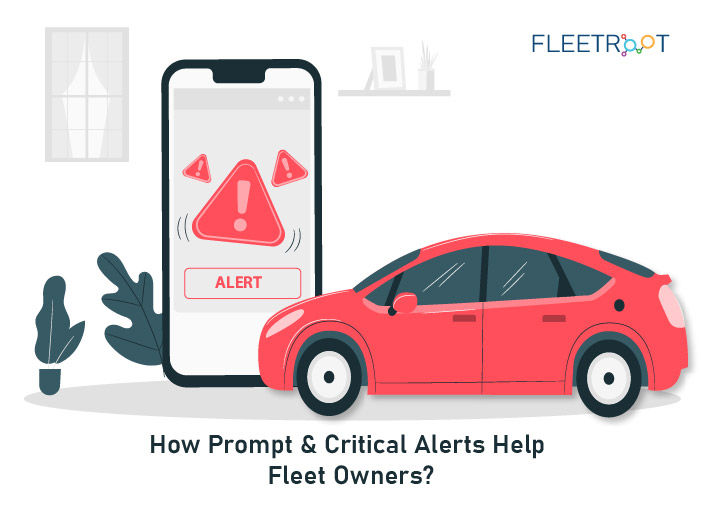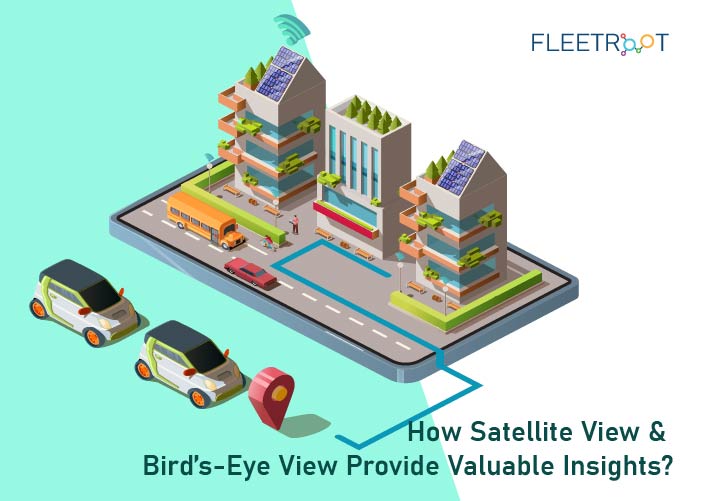GPS tracking devices offer fleet owners the ability to track all their commercial vehicles in real-time and optimize their fleet operations, resulting in optimal utilization of resources and improved customer satisfaction.
But with a myriad of available options, how can you choose the best GPS tracking device to fulfill your fleet management needs?
Here is a list of key factors to consider while selecting the best GPS tracking system for your business.
1.Real-time Tracking:
The system should provide live tracking and real-time features to enable you to track the exact location of every vehicle in your fleet. Knowing the current vehicle location helps to:
proactively calculate the Estimated Time of Arrival (ETA) of each vehicle at the destination
provide emergency response in case of a crash or a vehicle breakdown
prevent thefts and unauthorized use of vehicles
2.Safety:
The GPS tracker should have real-time automated alerts and notifications feature to enable you to monitor drivers’ driving behavior such as, including over-speeding, idling, rapid acceleration, hard braking, harsh cornering, and more. This helps to prevent accidents.
Driver Scorecards enable you to rectify and control poor driving behavior proactively and maximize safety.
With vehicular diagnostic information, you can monitor any changes in the condition or performance of your vehicle assets.
3.Geofencing:
The system should allow you to create a digital geofence around a particular location.
The system then sends an alert immediately to fleet managers when a vehicle enters or exits a predefined geographical boundary.
4.Fleet Maintenance:
The tracking software should provide an automated vehicle maintenance schedule to stay up-to-date on vehicle maintenance and reduce breakdowns and unplanned downtimes.
Real-time diagnostic alerts helps to take corrective measures before an identified problem becomes more severe and requires costly repairs.
5.Right-Sizing of Fleet & Staff:
The system should provide valuable insights to help management make informed decisions.
By knowing how frequently your drivers use every vehicle, you can easily match the required number of vehicles to actual demand.
This enables you to improve asset utilization of your fleet vehicles and maintain the right fleet size, leading to significant cost savings.
By having the ability to anticipate seasonal variations and other changes in demand, you can have better control over the staffing levels. This helps you to cut down overtime costs and improve workforce productivity.
6.Customer Service Enhancement:
The system should enable route optimization. By optimizing routes, you can ensure that drivers reach their destinations on time. This leads to customer satisfaction.
7.Reports & Analytics:
Select a solution that provides custom reporting, dashboards, and analytical tools. This helps you to make informed decisions to improve fleet operations.
8.ELD Needs:
Some industries have more stringent Electronic Logging Device (ELD) requirements for their fleets, such as vehicles transporting hazardous materials.
For them, it is necessary to select a tracking system that is integrated with an electronic logging device and has advanced features to ensure safety.
9.Your Budget:
Tracking systems are available in different price ranges. So, you should choose a system that best fits your budget and price range.
10.Product Features and Services Offered:
Proprietary/Non-Proprietary Technology: Check if the tracking device is proprietary or non-proprietary. Proprietary devices can only be used with a specific, branded software and will be useful as long as you keep using the branded software.
On the other hand, non-proprietary technology is compatible and can be used in conjunction with a third-party vendor’s fleet management software.
Integration & Compatibility: The solution should be able to integrate and share the captured data with other third-party software and devices.
It is also important to ensure that the telecommunication infrastructure in your company is compatible with the communication method that the GPS device will utilize.
Scalability: Consider a scalable tracking solution that can adapt to the changing needs or demands as your business grows.
Ease of Use: If the technology is too complicated, then it may become confusing for users. So, choose an extremely user-friendly system. It should be simple, fast, and easy to install, use, and maintain.
Accessibility: The system should be accessible through various devices, including desktop, tablets, or mobile phones. The Graphic User Interface (GUI) should be simple and intuitive.
Bird’s-eye View: What could be more wonderful than getting to observe the movement of vehicles on a real-time map? So, choose a solution that can provide a satellite view and a bird’s-eye view of your fleet’s position in the field at a glance, at any given point in time.
Flexibility/Customizations: Different types of fleets have different tracking needs. Therefore, the flexibility of the software is key to getting the most out of the GPS tracker. Choose software that is flexible and customizable to your company’s needs.
Demonstration & Training Support: The solution provider should conduct a detailed demonstration and training, during and after the implementation, for the entire staff to understand the available features and how to use them.
The provider should enable the staff to utilize the software to its full potential.
Troubleshooting/Technical Support: The solution provider should provide 24/7 technical support to resolve any technical problems encountered by users.
Warranty: Product warranty is a good indicator of the quality of a product. That is why it is important to confirm the warranty period offered by the provider.
With a long-term warranty offer, you needn’t worry about the cost of replacing or repairing your tracking system.
Upgrades: Choose a company that makes continuous improvements in the existing products to offer product upgrades and also invests in future innovations based on technological advancements.
Conclusion:
A real-time GPS vehicle tracking system offers several benefits to fleet business owners.
But with so many options available in the market today, choosing the right device for your business can become a daunting task.
The above list of key factors to be considered can help you narrow down your options and assist you in the selection process. So, are you now ready to choose a good tracking software to streamline your overall fleet operations?


